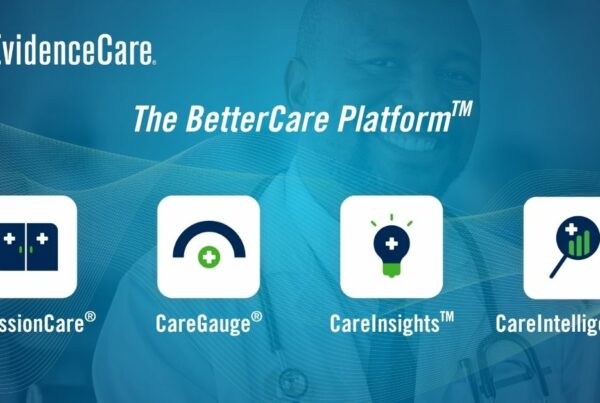A Brief History of Clinical Decision Support (CDS)
Clinical Decision Support (CDS) has a rich history dating back to the 1970s with a focus on support clinicians with rule-based systems using large knowledge bases of clinical information. While testing and examples have been dated back to the 1960’s, the next decade is when CDS became more computerized.
Here are a few of the key advancements in each decade:
-
- 1970s: Early work on expert systems in medicine
- 1980s: Integration of CDS into EMRs
- 1990s: Focus on real-time decision support
- 2000s: Increased use of CDS to improve quality and efficiency
- 2010s: Development of more automated CDS technologies, such as natural language processing and machine learning
Originally focused on simple rule-based decision-making and progressing to alerts and reminders, CDS systems have evolved with advanced technology and the widespread adoption of EMR (electronic medical record) systems.
Today, CDS encompasses a range of tools and features aimed at improving patient outcomes and empowering clinicians with evidence-based information at the point of care.
The Role of Clinical Decision Support
CDS continues to be a hot topic in the healthcare industry due to its proven ability – and growing potential – to improve patient care, enhance workflows, and optimize decision-making. It is crucial for health systems and leaders like hospital CMIOs, CMOs, and CIOs to have a good understanding of CDS and develop innovative ways to deliver it effectively.
At its core, CDS utilizes evidence-based data sets to provide healthcare professionals with the right information at the right time, enabling them to make better care decisions. A CDS system can integrate various inputs, such as EMR data, databases, external guidelines, calculators, AI models, websites, and more. These inputs work collaboratively within a health system to deliver effective decision support to healthcare providers.
The Five Rights of Clinical Decision Support
The Five Rights of CDS is a concept that dates back to 2009 but continues to be crucial for the successful implementation of CDS systems. They can be viewed like a checklist or litmus test for quality CDS software.
The 5 Rights of CDS are:
-
- Right information: The information provided by CDS should be evidence-based, concise, and relevant to the user’s needs.
- Right person: CDS should be delivered to the right person, such as a clinician that is being asked to make a clinical decision.
- Right format: CDS can be delivered in various formats, such as alerts, order sets, or passive reminders. The format should be chosen based on the specific need, keeping in mind the decision maker’s workflow and preferences.
- Right channel: CDS can be delivered through various channels, such as electronic health records, patient portals, or mobile devices. The channel should be chosen based on the use case.
- Right time: CDS should be delivered at the right time, such as when the user is making a decision or taking action.
Exploring CDS Use Cases
CDS can take various forms and serve multiple use cases within healthcare settings. Some common examples include passive alerts within EMR systems, reminders, pop-up alerts, clinical guidelines, order sets, analytic reports, dashboards, documentation templates, and prediction algorithms. These interventions can streamline workflows, improve diagnosis, and facilitate data-driven decision-making for healthcare providers.
EMRs and CDS
EMRs and CDS are closely connected – and sometimes used synonymously, though we’d argue there are key differences – with many EMR systems designed to support clinical workflows and offer native CDS functionality. It’s crucial to consider the nuances and capabilities of different EMR vendors when implementing CDS.
Some EMR systems serve as a natural foundation for CDS, providing native options for CDS delivery, along with integration options for external applications through methods like HL7 interfaces and FHIR – more on this in the next section. In short, this allows EMR systems to function as central databases for clinical workflows, housing essential data and enabling real-time access to patient information for external applications. These applications can then provide pertinent insights to end users.
While EMR vendors often provide built-in CDS capabilities, there are compelling reasons for hospitals to consider external companies for CDS solutions.
EMR companies primarily focus on developing comprehensive platforms for capturing data and may not have the resources or expertise to address specific clinical scenarios in depth. In contrast, external CDS companies with specialized focus can offer more targeted value and guidance in niche areas or workflows that can benefit from CDS.
The Role of CDS Hooks and SMART on FHIR
HL7, a not-for-profit standards development organization, plays a vital role in healthcare data standardization. One of the technologies under HL7’s oversight is SMART on FHIR, which establishes a standard mechanism for incorporating external applications within EMRs.
SMART on FHIR facilitates secure authentication, the sharing of EMR context, and workflow integration. Complementing this, CDS Hooks facilitates the streamlined consultation of external applications during EMR workflows, providing actionable guidance precisely when it’s needed.
SMART on FHIR is a robust tool that harmoniously integrates with EMR systems, enabling the embedding of external applications into EMR workflows. This integration capability significantly enhances the value of external applications delivering clinical decision support. Leveraging SMART on FHIR, these applications can be used within native EMR workflows and offer meaningful guidance to healthcare providers without disruption.
In contrast, CDS Hooks excels in presenting timely and relevant insight at the moment when specific actions are taken. For instance, in the context of ordering decision support, CDS Hooks can suggest alternative options to decrease unwarranted care utilization before finalizing an order. This standardized approach streamlines the interaction between external applications and EMR workflows, ensuring the delivery of timely and relevant CDS to healthcare providers.
The Future of Clinical Decision Support
The future of CDS is bright, especially with the increasing adoption of integration standards by EMR companies and other healthcare organizations. As interoperability becomes a key focus in this evolving landscape, the need for high quality CDS will only grow. Additionally, the development of new technologies, such as artificial intelligence and machine learning, will enable the creation of even more sophisticated CDS systems, further enhancing their effectiveness and potential impact on patient care.
If you’re interested in learning about EvidenceCare’s unique approach to clinical decision support software, schedule a customized demo with us today!










